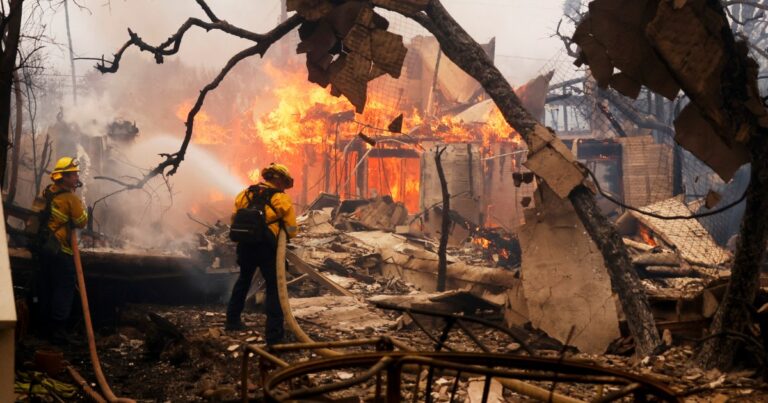Introduction to the FAIR Plan and Recent Developments
The Fair Access to Insurance Requirements (FAIR) Plan was established to provide homeowners in high-risk areas access to affordable insurance options, especially in regions prone to natural disasters. However, recent trends indicate that certain ZIP codes, particularly in San Francisco and the inner East Bay, which are not typically associated with high wildfire risks, have seen significant increases in FAIR Plan coverage. The implications and causes behind this phenomenon have raised concerns among policymakers and residents alike.
Rapid Increases in Coverage
In the past year, several neighborhoods within San Francisco and the East Bay have experienced staggering increases in the number of homeowners relying on the FAIR Plan for insurance coverage. For instance, the Twin Peaks region of San Francisco recorded a dramatic increase of 1,217%, while the Portola neighborhood saw a surge of 674%. Meanwhile, in the East Bay, Alameda’s Bay Farms neighborhood reported an astonishing increase of 1,327%, and San Leandro’s east side experienced a staggering 1,772% uptick in coverage. These numbers suggest a significant shift in the insurance landscape, prompting many to reassess risk factors associated with urban living.
Municipal Exposure in Northern California
A closer inspection of municipal exposure reveals that the City of Berkeley leads Northern California with the largest coverage under the FAIR Plan, accumulating a total debt of approximately $5.5 billion. This stark statistic underscores the heavy reliance on this insurance plan by municipalities and their residents. Conversely, within the East Bay Hills enclave, the city of Orinda reported the highest number of nonrenewals by State Farm in 2024, emphasizing the unsettled nature of local insurance policies. The FAIR debt in Orinda stands at about $4.2 billion, highlighting the precarious financial landscape for homeowners relying on these insurance policies.
Concerns from FAIR Plan Leadership
The ongoing challenges faced by the FAIR Plan were brought into sharp focus during a Congressional hearing in Sacramento in March, where the FAIR Plan President, Victoria Roach, warned of the system operating on the precipice of disaster. At the hearing, Roach articulated the precarious condition of the insurance model, expressing worries that its financial structure might be on the verge of collapse without timely interventions or strategic changes.
Financial Stability and Risk Exposure
According to Roach, the current financial position of the FAIR Plan is alarming. The plan is reported to have only around $385 million available to address potential wildfire losses faced by its policyholders. This amount, while significant, has been highlighted as insufficient to manage growing risk exposure resulting from increasing insurance needs across the state. To supplement its financial reserves, the FAIR Plan is also backed by bonds and reinsurance arrangements, yet industry experts question whether these measures can adequately sustain the financial demands anticipated in the face of escalating risks.
The Implications of Rising Coverage Costs
Rising coverage costs, whether correlated with heightened perceived risks or regulatory changes, raise larger implications for homeowners and municipalities alike. As the demand for FAIR Plan insurance coverage skyrockets, the financial strain on the plan could lead to increased premiums for policyholders, potentially pushing families out of affordable housing options. For communities already grappling with economic instability, exacerbated insurance costs can adversely impact home ownership and community sustainability.
Conclusion
The rising reliance on the FAIR Plan across low-risk areas in Northern California emphasizes a dire need for comprehensive strategies to address the changing dynamics of insurance coverage in relation to natural disasters. With alarming increases in coverage and financial stability concerns expressed by the FAIR Plan leadership, immediate actions could be crucial to avert a potential crisis in the insurance landscape. Policymakers, insurers, and residents must work collaboratively to evaluate and enhance the resilience of the insurance system as they collectively navigate concerns regarding affordability and accessibility in the years ahead.
FAQs
What is the FAIR Plan?
The FAIR (Fair Access to Insurance Requirements) Plan is designed to provide homeowners in high-risk areas access to insurance coverage, particularly in response to challenges posed by natural disasters like wildfires.
Why are certain neighborhoods experiencing such high increases in FAIR Plan coverage?
Recent trends suggest an increase in perceived risk even in neighborhoods that are generally not viewed as high-risk areas, prompting homeowners to seek insurance solutions from the FAIR Plan.
What are the financial concerns regarding the FAIR Plan?
The FAIR Plan currently holds around $385 million to address wildfire losses, which may be insufficient given the dramatic increase in policyholders and associated risks, raising concerns about its financial viability.
How does expanding FAIR Plan coverage affect homeowners?
As the use of FAIR Plan coverage rises, homeowners may face increased premiums, potentially leading to affordability issues and affecting homeownership levels in affected communities.
What measures can be taken to ensure FAIR Plan sustainability?
Strategic interventions may include reevaluating underwriting criteria, enhancing funding mechanisms, and encouraging comprehensive risk management practices to bolster financial stability in the face of rising claims.



